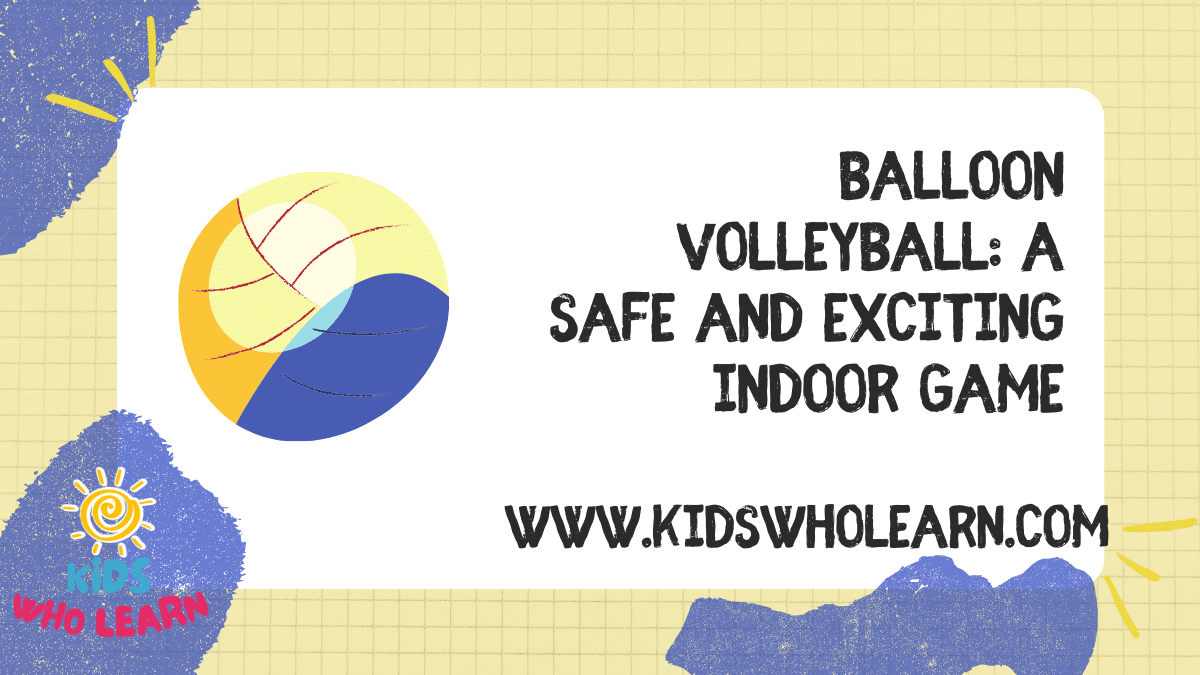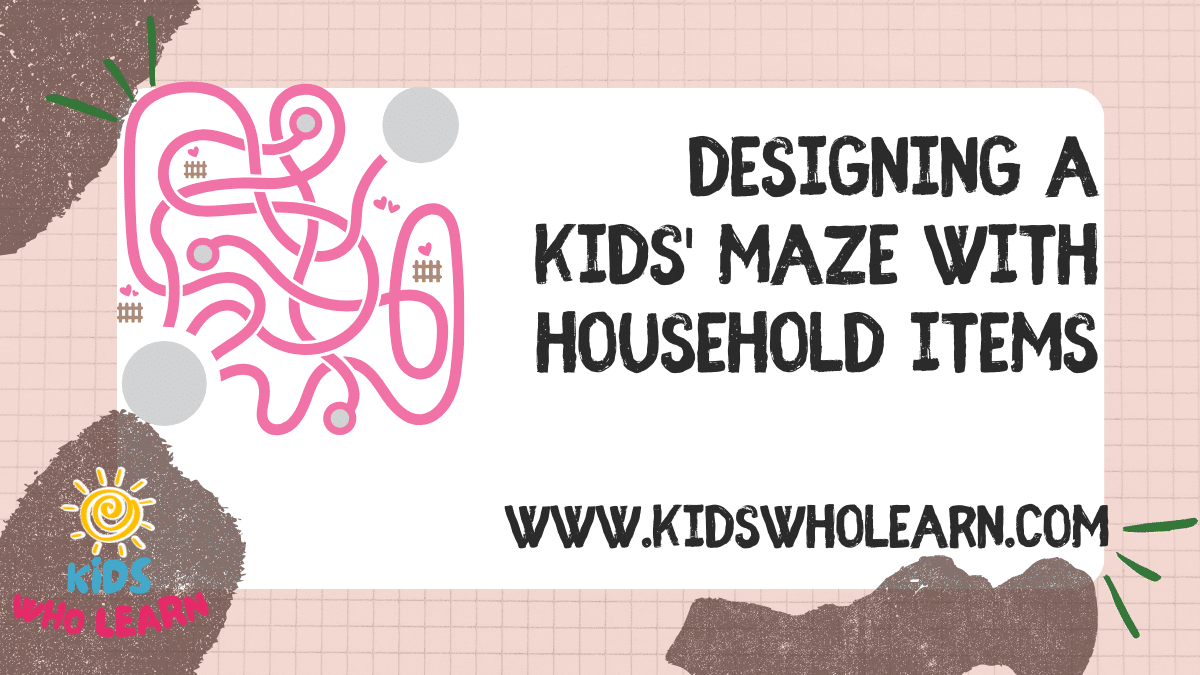Balloon volleyball is an invigorating indoor game that offers fun and safe recreational activity suitable for all ages. Unlike traditional volleyball, it substitutes the standard ball with a lighter, air-filled balloon, making it an excellent choice for both small indoor spaces and larger venues. With its gentle and slower motion, it provides a unique experience that emphasizes coordination and teamwork without the need for strenuous physical exertion, making it accessible to players irrespective of their athletic prowess or experience level.
The game is easy to set up, requiring minimal equipment and preparation. A simple net or even a string across the playing area can act as the divider, and the only essential gear needed is a standard balloon. From casual gatherings to organized events, balloon volleyball serves as a perfect icebreaker or a central activity that brings people together. It is a game that promotes social interaction and is often adapted with varying rules and setups to keep the experience fresh and engaging for repeat play.
Key Takeaways
- Balloon volleyball is an accessible and safe game for players of all ages.
- It requires minimal equipment and is adaptable for any indoor environment.
- The game enhances coordination while providing a fun and social experience.
History and Evolution of Balloon Volleyball
Balloon volleyball has its roots firmly planted in the tradition of family and group games that aim to provide inclusive, accessible entertainment. Originating as a spontaneous indoor adaptation of traditional volleyball, balloon volleyball traded the standard ball for a lighter, air-filled balloon. Your friendly matches could take place in a variety of settings, such as living rooms or gymnasiums, where a balloon’s gentle nature reduces the risk of injury and damage.
The game’s evolution can be traced to its casual, informal beginnings, without a single point of origin. Over the years, balloon volleyball has become an organized activity, often seen in schools, senior centers, and at family gatherings. The simplicity of the game ensures that people of all ages and physical abilities can participate, enjoying the volley of a balloon back and forth over a makeshift net.
Timeline Table
| Year | Development |
|---|---|
| 1960s | Informal playing of balloon games. |
| 1980s | Wider adoption in recreational settings. |
| 2000s | Structured rules and variations developed. |
The rules of balloon volleyball have also seen an evolution. Initially, rules were hardly set in stone and heavily depended on the players’ agreement. Now, structured variants and even competitive versions exist, harnessing the basic elements of volleyball but tailored to the unique dynamics of a balloon.
As you play balloon volleyball today, you are participating in a game that represents an evolution of inclusivity in recreational activities. While still maintaining a decidedly relaxed and flexible attitude, the game has carved out a charming niche in the sphere of social games.
Basic Rules and Objective of the Game
Balloon volleyball is an indoor activity that you can enjoy safely while engaging in a light and fun form of exercise. Your objective in the game is to score points by preventing the balloon from touching the ground on your side of the net, while at the same time, trying to make it touch the ground on your opponents’ side.
The game is played by two teams, each occupying one half of a room, divided by a net or a makeshift barrier. Here’s a breakdown of the core rules you need to follow:
- Begin the match by determining which team will serve first.
- You can hit the balloon with any part of your body, but you must not hold or catch it.
- Each team can hit the balloon up to three times before sending it back over the net.
Scoring works as follows:
- You score a point if the balloon lands on the opposing team’s side or if your opponents commit a fault.
- If the balloon touches the ground on your side, the opposing team earns a point.
The match continues until one team reaches a predetermined number of points, usually 21 or 25, which is considered a winning condition. If the game is close, some choose to play until there is a two-point lead.
Remember to avoid allowing the balloon to go out of bounds, as this will also result in a point for the opposing team. Keep the balloon within the boundaries of the room or the marked area you’re using as a court. The simplicity of balloon volleyball makes it an inclusive and adaptable game suitable for all ages and skill levels.
Setting Up the Playing Area
To start, choose a spacious indoor area free of obstacles that could pose a safety hazard. Your playing space should resemble a volleyball court, allowing for movement back and forth as well as side to side.
Required Materials:
- A volleyball net or substitute
- Masking tape or string
- Two sticks or poles (if no fixed posts available)
Net Set-Up:
- Secure the volleyball net across the center of the chosen area. If you don’t have a proper volleyball net, you can use string or tape to create a makeshift barrier.
- The net or substitute should be at a height accessible to all players, typically around 5-6 feet.
First, place the net or its substitute carefully in position. If using sticks, ensure they are sturdy enough to hold up your makeshift net, and tape or tie your string or tape taut between them. The net should divide the playing area into two equal halves.
Marking the Court:
- With masking tape, outline the court boundaries on the floor. The official volleyball court dimensions are 18 meters by 9 meters, but you can adjust based on space availability.
Using masking tape, mark the following:
- The boundary lines of the court
- A center line dividing both sides
- Service areas at both ends of the court
Safety Check:
- Ensure the net is securely fastened and won’t come loose during play.
- Double-check that the floor is clean and dry to prevent slips.
With your area now set, you’re ready to begin a match of indoor balloon volleyball, guaranteeing a fun and safe indoor activity.
Equipment Needed for Balloon Volleyball
To play balloon volleyball, you need specific equipment for a safe and enjoyable game. The essentials comprise appropriate balloons, a substitute for a volleyball net, and additional accessories.
Choosing the Right Balloons
When selecting balloons for volleyball, opt for latex balloons due to their durability and flexibility. For the game, standard-size balloons work best. Large sizes may be too cumbersome, and smaller ones might not provide the right level of play. Avoid the use of helium balloons; they will float away and are not suitable for the dynamics of the game.
- Size: Choose medium to standard-sized balloons for ease of play.
- Material: Latex balloons are preferable for their elasticity.
- Shapes: Regular oval-shaped balloons mimic the properties of a volleyball.
- Pattern: Plain or patterned balloons are both suitable, but avoid excessive prints that could distract players.
Substitutes for Volleyball Net
If you don’t have access to a volleyball net, you can easily create a substitute. A rope or string strung across the room can act as a demarcation line. Alternatively, use a towel or even a row of taped-together paper plates as a makeshift net. Ensure that it’s stable and visible to all players.
- Rope/String: Stretch it across the playing area at an appropriate height.
- Towel: Hang or drape a towel to divide the playing field.
- Paper Plates: Line up plates and fix them together, then hang or support them as a barrier.
Other Necessary Accessories
A few other items will enhance your game experience:
- Paper Towel Rolls: Use these as makeshift paddles to hit the balloon back and forth.
Accessory Usage Paper Towel Roll Paddle for hitting the balloon - Make sure that all accessories are safe to use indoors and do not pose a risk of injury or damage to the surroundings.
How to Play Balloon Volleyball
Balloon volleyball offers an engaging way to stay active indoors. This game emphasizes coordination and light exercise, and through understanding the rules, you can maximize your enjoyment.
Starting the Game
To begin, divide the players into two teams. Each team takes a position on opposite sides of a designated “net,” which can simply be a piece of string or a row of chairs. One team starts by serving the balloon. To serve, stand behind the back line of your side and gently hit the balloon over the net.
Scoring System
The objective is to prevent the balloon from touching the ground on your side of the net while trying to make it touch the ground on the opposing team’s side. The scoring works as follows:
- Point: When the balloon touches the ground on the opposing team’s side, your team scores a point.
- Side-out: If the serving team fails to score, the balloon is “sided out,” and the other team gains the right to serve.
- Scorekeeping: Keep track of points during play, and set a predetermined point limit to determine the winner—typically 21 or 25 points.
In-Game Strategies
During the game, you’ll rely on a variety of skills to outmaneuver the opposing team. These strategies include:
- Passing: Use soft, controlled hits to pass the balloon to your teammates, setting up for a strategic hit over the net.
- Team Coordination: Communication and coordination with your team members are essential for a strong defense and to effectively return serves.
- Hit Placement: Aim your hits toward spaces on the opposing side that are harder to defend, increasing your chances to score.
Remember, as you refine these strategies, the emphasis is on enjoyment and safety for all players.
Safety Precautions and Tips
When playing Balloon Volleyball, your safety and the safety of others should be your top priority. To ensure a safe environment for all, especially kids and younger children, follow these guidelines:
Clear the Area: Ensure that the play area is free of furniture and sharp objects that could cause injury.
Balloon Condition: Regularly check the balloon for any signs of deflation or damage. Replace it if necessary to avoid any choking hazards for younger children.
Supervision: Always have an adult present to supervise the game, ensuring that the rules are followed and play remains safe for everyone.
Hand Hygiene: Make sure everyone washes their hands before and after playing to maintain a hygienic environment.
Play Space: Choose an area with a soft floor or lay down mats to cushion any falls.
Avoid Overexertion: Encourage breaks and make sure players stay hydrated to prevent exhaustion.
Contact Rules
- No pushing or physical contact between players.
- Keep a comfortable distance to prevent accidental bumps.
Balloon Rules
- Do not allow kids to put the balloon in their mouths.
- Discard broken balloon pieces immediately to prevent choking.
Remember, the goal of Balloon Volleyball is to have fun and stay active in a secure setting that caters to all ages within the family. Following these simple tips will help create an enjoyable and risk-free game for everyone involved.
Variations of Balloon Volleyball
Balloon Volleyball can be adapted into various fun iterations to maintain excitement and accommodate different skill levels or space constraints. The game’s flexible nature allows it to be enjoyed by people of all ages. Listed below are some popular variations:
Balloon Tennis
Instead of using hands or making a volleyball-style setup, you can use rackets (or makeshift paddles) to hit the balloon back and forth. You can play this across a table or a low net to mimic the style of tennis.
Multiple Balloons
Adding more than one balloon into the game increases the challenge and unpredictability as each player must keep track of and return multiple balloons simultaneously. This can be a thrilling addition for those who have mastered the standard one-balloon play.
| Variation | Equipment Needed | Description |
|---|---|---|
| Balloon Tennis | Rackets/Paddles | Utilize rackets to simulate a tennis match. |
| Multiple Balloons | None | Introduce extra balloons for added difficulty. |
Balloon Races
Turn the game into a race by setting up a relay-style match where each player must keep the balloon afloat and maneuver it across a set distance to the next player. This variation emphasizes speed and coordination.
Balloon Catch
Incorporate a rule where each player must catch and then release the balloon back into play. This alteration adds an aspect of control and can be a good practice for developing hand-eye coordination.
Always ensure a safe environment by removing any fragile items from the play area and defining clear boundaries. These modifications to traditional Balloon Volleyball will keep the activity fresh and engaging for everyone involved.
Organizing a Balloon Volleyball Match for an Event
When planning a balloon volleyball match for your event, you’ll find it’s a wonderful addition that injects fun and energy into the atmosphere, suitable for parties or family gatherings. Begin by selecting the right space; an indoor game like balloon volleyball requires a clear area free of sharp objects that could pop the balloon.
Setting Up the Play Area
- Mark the Court: Use tape to outline a rectangular court on the floor.
- Divide the Court: String a piece of yarn across the width of the court to act as the net, about 6 feet high.
Gathering Equipment
- Balloons: Have several spare balloons in case some pop.
- Yarn or Rope: For creating the ‘net’.
- Tape: To mark the play area and center line.
Creating Teams
Divide your party into teams, aiming for equal numbers to ensure fair play. It’s not just a game but a route to learning fun team dynamics and sportsmanship.
Rules Briefing
Brief your players with some basic rules:
- Keep the balloon from touching the floor on your side.
- You may use your hands or other body parts to hit the balloon over.
- Each team is allowed a maximum of three touches before sending the balloon over the net.
Remember, the target is to maintain volleying as long and as creatively as possible, turning this simple game into a friendly, competitive race. Balloon volleyball serves as an excellent party game, transforming any indoor or backyard setting into an arena of laughter, excitement, and playful competition.
Benefits of Playing Balloon Volleyball
When you play balloon volleyball, you engage in an inclusive game that welcomes participants of all ages, making it a family-friendly activity that can be enjoyed in the comfort of your home. The game’s simplicity means it’s easy to play and doesn’t require complex rules or special skills, ensuring everyone can join in the fun immediately.
Here are some key benefits:
- Safety: The soft, lightweight nature of the balloon significantly reduces the risk of injury, making the game suitable for indoor play.
- Physical Coordination: Balloon volleyball encourages you to develop hand-eye coordination as you aim and hit the balloon.
- Social Interaction: It promotes teamwork and communication among players, fostering a sense of togetherness.
| Aspect | Benefit to You |
|---|---|
| Accessibility | Possible to play in small spaces. |
| Setup | Minimal equipment needed. |
| Physical Activity | Provides a light, cardiovascular workout. |
| Adaptability | Rules can be adjusted to suit player levels. |
The game’s slow-paced nature allows you to react and strategize, honing your anticipation and reflexes without the pressure of more intense sports. Balloon volleyball is more than just a pastime; it’s an opportunity to engage in a safe, exciting activity that brings people together, enhances coordination, and promotes active living across generations.
Conclusion and Encouragement to Play
Balloon volleyball stands out as a unique indoor game that ensures safe and delightful experiences for players of all ages. It’s a versatile sport that adapts to various indoor environments, making it suitable for family gatherings, school events, and even office breaks.
Why You Should Play:
- Accessibility: You don’t need specialized equipment; a simple balloon and some space are enough to start a match.
- Safety: It poses minimal risk, making it ideal for both children and the elderly.
- Health Benefits: Engaging in balloon volleyball promotes light physical activity, helping to keep your body active.
- Social Interaction: It encourages teamwork and communication, fostering stronger connections with family and friends.
Quick Start Guide:
- Find a Play Area: Clear your living room, hallway, or any suitable indoor space.
- Set Up Your “Net”: Use a string or a ribbon to define your play area.
- Gather Your Players: Split into teams and explain the simple rules.
Experience the joy of balloon volleyball, a light-hearted sport that combines fun with subtle learning opportunities. It sharpens your reflexes and instills a sense of strategy as you play. Whether you’re looking to add a fun twist to your family game night or seeking an indoor activity that gets you moving without the intensity of traditional sports, give balloon volleyball a try and share some laughs while you’re at it.
Frequently Asked Questions
In this section, you’ll find in-depth answers to some common questions about playing, adapting, and teaching balloon volleyball.
What are the official rules for playing balloon volleyball?
In balloon volleyball, your goal is to prevent the balloon from touching the floor on your side of the ‘net,’ which can be a piece of string or tape. Teams consist of two or more players, and a point is scored each time the opposing team lets the balloon touch the ground. The game is typically played to a set number of points, such as 25, and the team must win by at least two points.
How can balloon volleyball be adapted for senior participants?
For seniors, modify the game by allowing more than one touch before the balloon goes over the net or by playing seated to reduce mobility demands. Additionally, the distance between players and the ‘net’ height can be adjusted to suit participants’ comfort and ability levels.
What are the physical and mental benefits of playing balloon volleyball for the elderly?
Balloon volleyball encourages gentle physical activity, which can improve hand-eye coordination and maintain muscle tone. It also stimulates mental focus and provides an opportunity for social interaction, which can aid in the prevention of cognitive decline.
Can you provide a typical lesson plan for introducing balloon volleyball in a physical education setting?
Begin with a warm-up that includes stretching and light cardiovascular activity. Introduce the basic rules and objectives of the game, demonstrate proper techniques for hitting the balloon, and set up the ‘net.’ Start with some practice volleys, then organize students into teams for a friendly match to reinforce the rules and skills learned.
What are some variations of balloon volleyball that can be played indoors?
Variations include using larger or multiple balloons, implementing individual challenges such as keeping the balloon aloft with only one hand, or adding obstacles on the floor that the balloon must be played over. These variations keep the game fresh and engaging for participants.
Is there an alternative name for balloon volleyball and are there any significant differences?
Sometimes referred to as ‘balloon bop’ or ‘airball,’ these variations of balloon volleyball follow similar rules but may not use a net at all. Instead, players can be challenged to keep the balloon from touching the ground for as long as possible without the formal structure of traditional volleyball.













